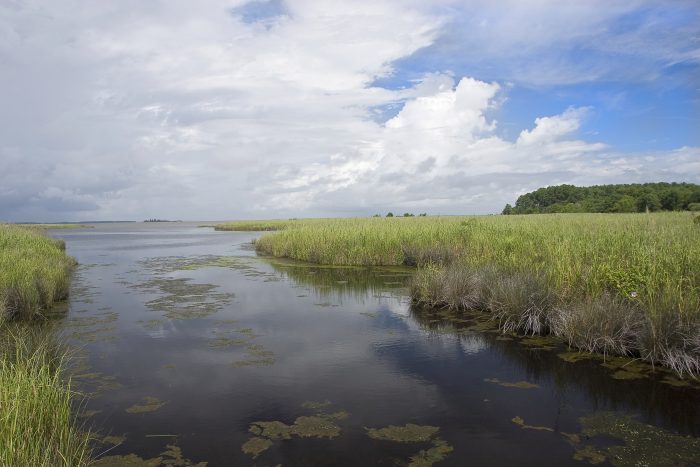How we’re working to ensure a safer Cape Fear River basin for NC communities
An agreement by state regulators with the City of Greensboro allows increased discharges of cancer-causing 1,4-dioxane into the drinking water source for nearly one million people in violation of the Clean Water Act and state water quality laws.
According to EPA risk assessments, the drinking water concentration of 0.35 parts per billion—about one drop of water in three Olympic-size swimming pools—over a lifetime may be harmful to a person’s health, so we’re challenging the agreement on behalf of the Haw River Assembly.

“The state’s agreement gives Greensboro a free pass, putting the interests of the city’s industrial polluters ahead of communities downstream,” says Geoff Gisler, a senior attorney at SELC. “The department refused to apply the correct standard, rejected the concerns of Pittsboro and Fayetteville, and allowed more pollution, not less. This agreement is a dangerous precedent that puts every community in the Cape Fear River watershed at risk.”
The chemical 1,4-dioxane is toxic to people, causing liver and kidney damage, and increases the risk of cancer. It is used, and created as a byproduct, when manufacturing chemicals, paints, cosmetics, cleaning products, dyes, textiles, paper, and other products.
The agreement negotiated by the North Carolina Department of Environmental Quality with the City of Greensboro allows 33 to 45 ppb of toxic 1,4 dioxane into the Haw River and the Cape Fear River basin, which is about 100 times more than the state toxics substances level of 0.35 ppb, and 2-3 times higher than Greensboro’s average discharge concentration in 2020.
The Haw has been threatened by ongoing industrial contamination by multiple sources for decades, leaving the ecosystems and the downstream communities that depend on it at risk. This is a clear example of a polluter acting in violation of water quality standards, and we expect the department to hold them accountable.
Emily Sutton, the Haw Riverkeeper
The Cape Fear River basin supplies the drinking water for nearly one million people in North Carolina, including communities in Pittsboro, Chatham County, Sanford, Harnett, Dunn, and Fayetteville (including Fort Bragg), and 1,4 dioxane is not removed through traditional drinking water treatment process.
Industries send 1,4 dioxane-contaminated waste to Greensboro’s wastewater treatment plant, which has been discharging 1,4-dioxane into the Haw River since at least 2014. Both the state and Greensboro have the responsibility under the Clean Water Act to regulate harmful industrial waste and prevent it from polluting downstream drinking water supplies.
To do so, wastewater treatment plants have the authority to require the polluter to control pollution at the source with treatment technology or to use alternative materials. Over the past six years, the state and Greensboro have refused to take actions that would keep 1,4 dioxane pollution out of the drinking water supply for communities and families downstream, settling for voluntary measures rather than enforcing the law.
“The Haw has been threatened by ongoing industrial contamination by multiple sources for decades, leaving the ecosystems and the downstream communities that depend on it at risk,” says Emily Sutton, the Haw Riverkeeper. “This is a clear example of a polluter acting in violation of water quality standards, and we expect the department to hold them accountable.”
